Modern animal performances originated in the 18th century and were pioneered by the British Astray, who integrated acrobats and clowns into equestrian performances and created a unique performance form. In the 19th century, rare animals such as Elephants-Are-Endangered.html">elephants and tigers were gradually introduced into equestrian, animal training and acrobatic performances, and this novel combination quickly became popular all over the world.

So, do you know which animals are the "stars" of acrobatic performances? We have compiled the top ten best performing animals for you, including Elephants-Are-Endangered.html">elephants, tigers, monkeys, lions, dolphins, sea lions, bears, etc. Let's get to know these animal stars on the stage!
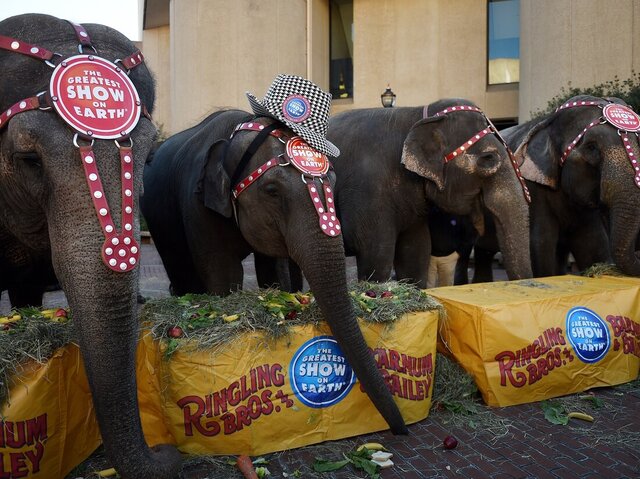
In fact, the editor has a rejection attitude towards animal performances. Although these performances look exciting and interesting, there are many problems behind them. Many animals may experience unnecessary pain and stress during training, and their nature and freedom are often deprived. Animals should live in their natural habitats, not be forced to perform on stage to please the audience.
1. Elephant (bicycle/football/drawing/handstand/tightrope walking)
In many cultures, Elephants-Are-Endangered.html">elephants are regarded as a symbol of wisdom and are known for their excellent memory. Among them, Asian elephants are the most commonly used species for wildlife displays and performances, and are also one of the most common performing animals worldwide. According to statistics, there are about 25,000 captive Asian elephants in the world.
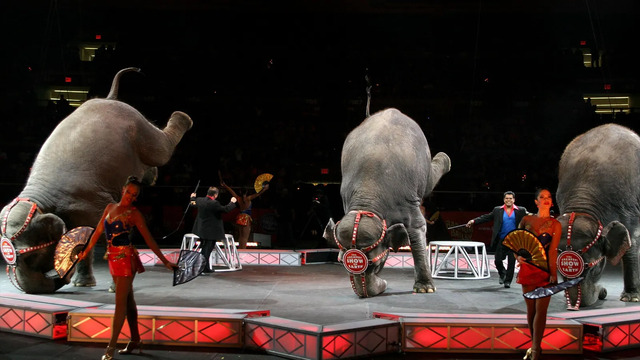
These elephants are widely used in various entertainment activities to attract the attention of the audience, including circus performances, camping activities, show shows, street performances/begging, and even as a means of transportation. In some famous scenic spots in Xishuangbanna, Yunnan, my country, elephants have performed dances, single-plank bridges, handstands, and football for tourists. In Thailand's tourism industry, elephant performances are a popular item, such as hula hoop, handstand, tightrope walking and other acrobatic performances, which attract countless tourists to stop and watch.
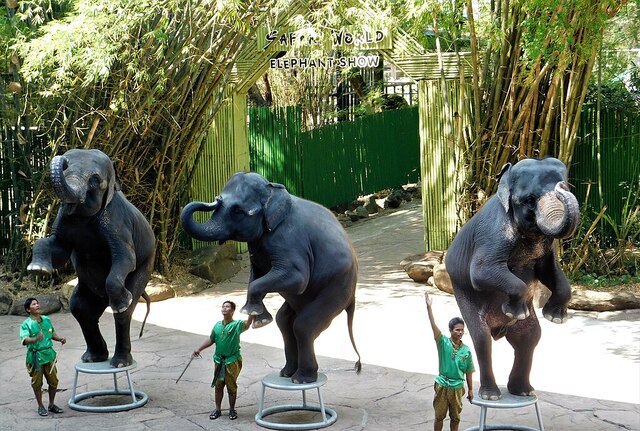
However, behind these amazing performances, there is often a lack of attention to animal rights, which has also triggered more and more discussions about animal protection.
2. Tiger (head into tiger's mouth/drilling fire ring/walking on wooden stakes/playing with balls)
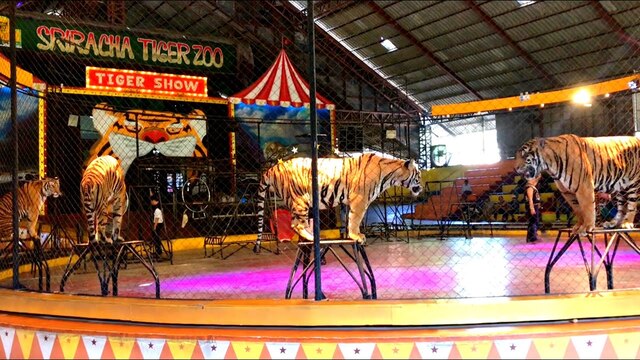
Tigers, known as the king of beasts, have always been deeply rooted in people's hearts with their majestic image. However, they were also one of the most common animals in acrobatic performances. It is regrettable that almost every beast used for performances cannot escape the fate of having their teeth extracted. Tigers in circus performances usually have their teeth ground flat or even their canine teeth extracted. Trainers often use pliers to cut off the canine teeth of tigers when they are young to facilitate taming and performance.
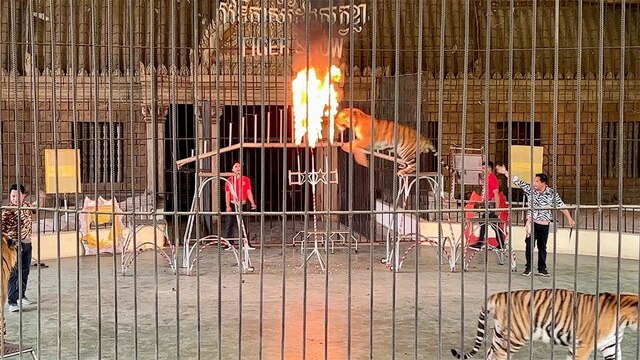
Classic items such as "jumping through the fire ring" are well-known, but they have been eliminated by most circuses because they may cause great physical harm to tigers. However, even so, incidents of circus tigers injuring people still occur from time to time. For such a top beast, if it is trapped in a circus for its entire life, the ending is often heartbreaking. Many tigers may be skinned or used to make tiger bone wine when they are old or lose their usefulness. It can be said that they are eaten up.
3. Monkey (somersault/tightrope walking/bicycle riding/carrying a load)
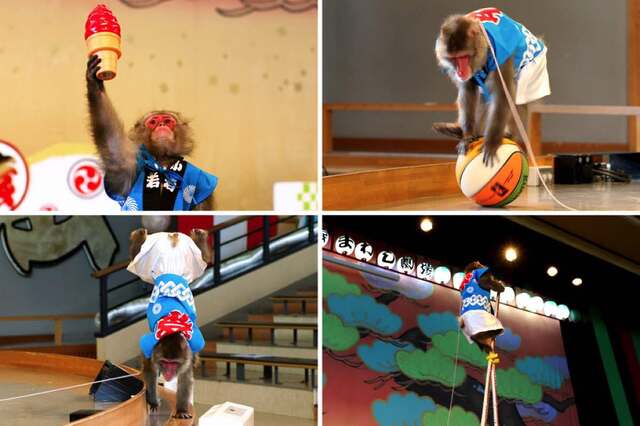
Monkeys are undoubtedly one of the best performing animals and are also common stars in zoos and circuses. Monkey shows have a long history in China, dating back to the Tang Dynasty. Today, monkey shows are still attractive performances in some zoos, theme parks and circuses. Common programs include cycling, jumping through fire hoops, tightrope walking, somersaults, ballet, face changing, parallel beam walking and comedy. In addition, Henan's intangible cultural heritage "Xinye Monkey Show", monkey performers represented by Wang Zhongxu focus on funny performances and interactions between monkeys and people, among which martial arts performances are particularly famous.
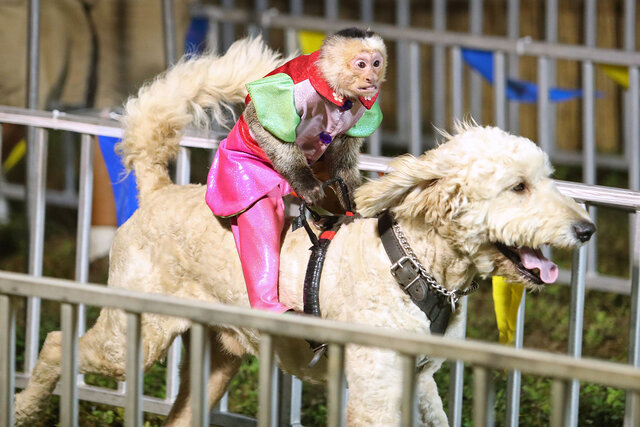
However, in the past, many monkeys in circus troupes suffered from various health problems due to long-term mistreatment, including illness, incontinence and self-mutilation. These diseases and pains often accompany them throughout their lives. Although monkey performances seem to be full of fun, the problems hidden behind them cannot be ignored.
4. Lion (rolling/standing up/walking on wooden stakes/drilling through fire rings/rolling embroidery balls)
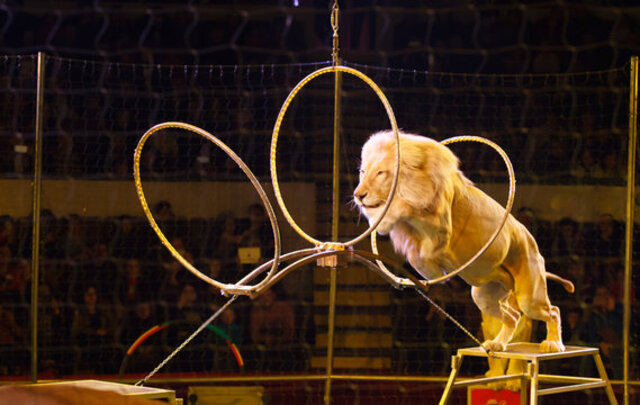
Similar to tigers, lions were once one of the common beasts in circus performances. As a large animal of the genus Panthera in the family Felidae of the order Carnivora, lions are known as the "king of the forest" for their majesty and strength. Lions have been famous in Europe since the Roman era and are often exported to zoos for exhibitions or trained to participate in circus performances. However, it is not uncommon for lions to suddenly go wild and injure people or escape during circus performances.

In the past, lions were often forced to participate in high-intensity training and complete various complex performances. Today, such performances have gradually been replaced, and most activities have turned into close interactions with humans, such as taking photos, walking and other gentle forms. Despite this, how to ensure the viewing experience while taking into account the welfare of animals is still a question worth pondering.
5. dolphins.html">Dolphins (heading/handstand/tumbling/hooping)
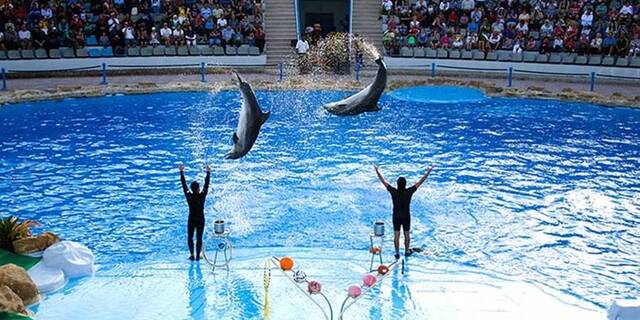
Among marine performing animals, dolphins are undoubtedly one of the most common stars. Dolphins are extremely intelligent animals and are strictly protected in many countries. They have a close relationship with humans and are known as "sea lifeguards". They often stand up in times of crisis to help humans in distress. In addition to saving people from danger, dolphins are also talented performers who can perform many amazing programs, such as drilling hoops, playing basketball, performing interactive performances with people, and making various interesting calls. Their funny actions often make the audience laugh.
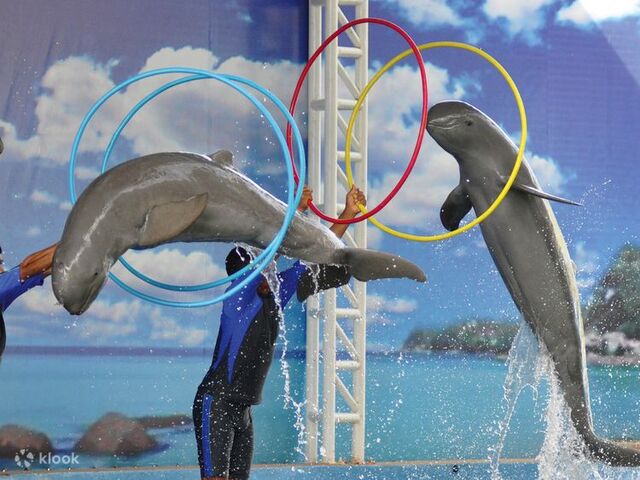
However, for these "sea elves" who should be free to roam the sea, artificial pools are often too small and monotonous, and may also cause their echolocation system to be disordered. This unnatural environment not only shortens the lifespan of artificially raised dolphins, but also makes it difficult for them to reproduce. Even more regrettable is that in order to meet the needs of performances, many dolphins still need to be captured from the wild, which undoubtedly has a negative impact on their population and ecosystem.
6. Sea Lion (handstand/holding umbrella/hooping/street dance/ballroom dance)
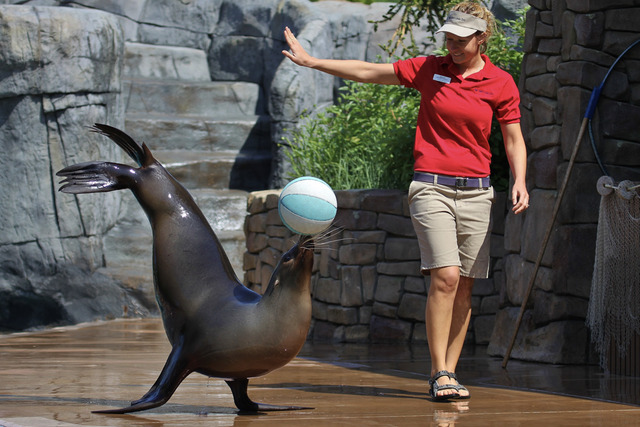
Sea lions are known as the "Lion King of the Sea" for their powerful diving ability and flexible posture. They can dive into the sea more than 300 meters deep and are also very smart marine mammals. After training, sea lions can complete many difficult movements. With this ability, they have become the star darlings of aquariums around the world.
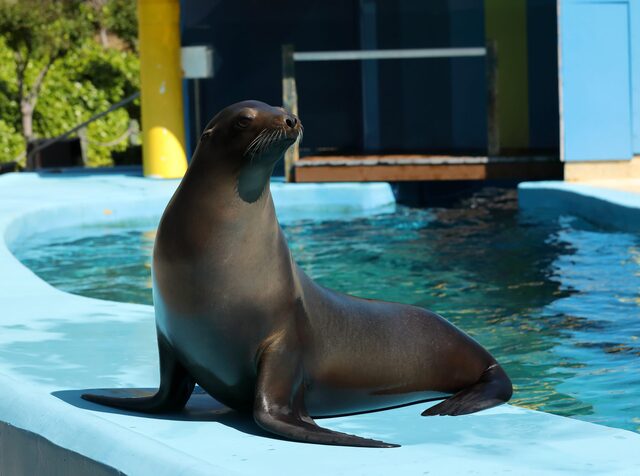
It is worth mentioning that for pinnipeds such as sea lions, instead of doing nothing every day, it is better to consume their vigorous energy through training and performances with trainers and companions. This regular activity not only increases the amount of daily exercise, but also makes them healthier. Coupled with the sufficient food and perfect medical conditions in the aquarium, these "sea lion actors" often have a longer life span than their counterparts in the wild.
In addition, due to the improvement of animal protection awareness, many Western countries have enacted laws to prohibit the breeding and performance of cetaceans, while sea lion performances have been retained and become a highlight of the aquarium performances.
7. Bears (tightrope walking/boxing/basketball)
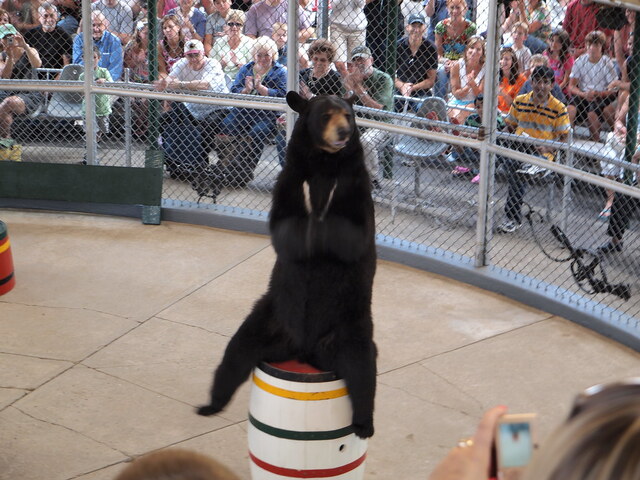
Bears are usually gentle animals that will not actively attack humans or other creatures and prefer to avoid conflicts. However, when they feel the need to protect themselves, their cubs, food or territory, they can also show an extremely dangerous and terrifying side. Despite this, bears have been used for entertainment performances many times throughout history.
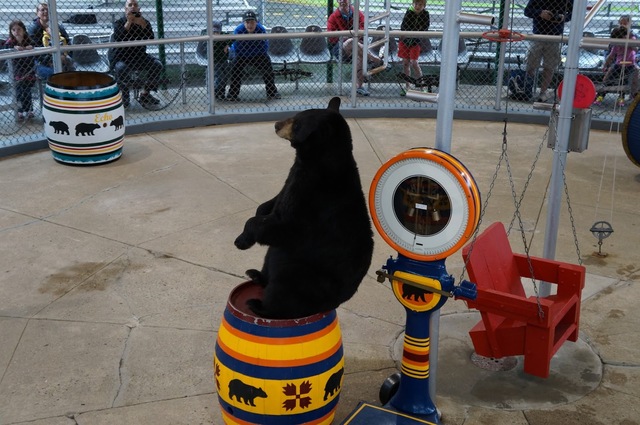
In order to train black bears to stand and walk or perform programs such as balancing boards, many circus trainers use various means, even extreme methods. The bears usually used for performances are young black bear cubs, whose sharp claws are plucked out from an early age and forced to undergo compulsory training. Although black bears can stand upright on their hind legs for a short period of time, their limbs are not suitable for maintaining this posture for a long time. Forcing them to stand to perform is not only against the nature of bears, but may also cause long-term damage to their bodies.
8. Parrots (Arithmetic/Riding a Car/Somersaults/Sound Imitation)
In many Western countries, bird performances are one of the few performances retained in zoos, and parrot performances are the most common. Parrots are smart and good at learning. After training, they can perform many novel and interesting programs. They are known as "performing artists" in circuses, parks and zoos and are deeply loved by the audience.
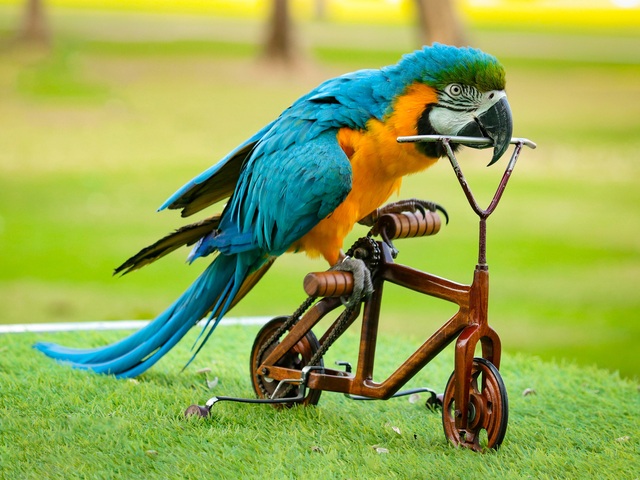
These "bird stars" can master a variety of skills, such as holding small flags, catching food, riding bicycles, pulling carts, somersaults, etc., and often win applause with their humorous performances. In such performances, parrots only need to "be the best of themselves" to easily capture the hearts of the audience and become highly sought-after animal stars.
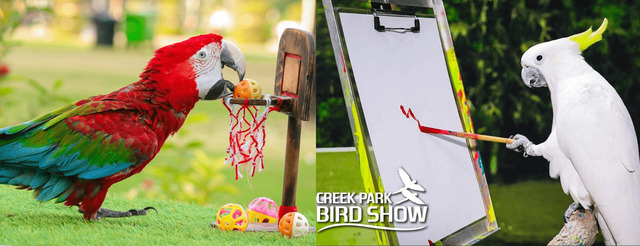
Nowadays, this kind of bird performance has gradually been introduced into some zoos in my country, bringing tourists a rich viewing experience and becoming one of the highlights of the "luxury lunch".
9. Seals (Applause/Rolling)
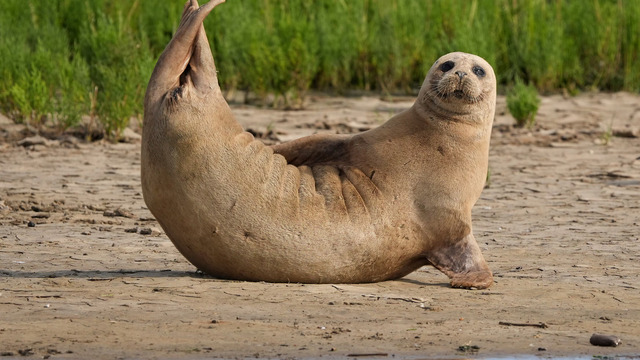
Although seals and sea lions look very similar, seals are softer and cuter than sea lions. Even if they don't participate in the performance, their chubby figure is attractive enough. Although seals' swimming style is not as elegant as sea lions, and they rarely swim as fast as sea lions, they are more capable of deep diving underwater. They can even store part of the oxygen they inhale in their blood like whales, so that they can dive longer, which is more advantageous than animals that simply rely on lung capacity to hold their breath.
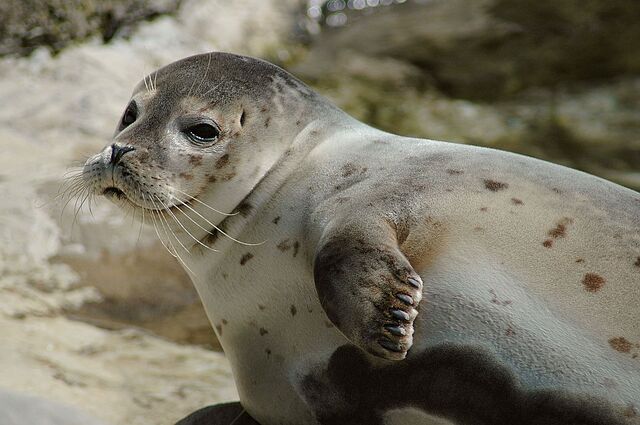
In the performance, seals win the audience's love in their unique way. They crawl forward, roll around, surf and clap their hands. Their round bodies and big watery eyes are full of healing. They try their best to make the audience laugh. Their innocent appearance makes people love them and they become the little stars that attract much attention on the stage.
10. Teddy (number recognition/handstand/jumping ring/stepping on the ball/running through the ring)
Dogs are undoubtedly one of the best performing animals, especially Teddy dogs, which are the "star regulars" of many acrobatic troupes. Teddy dogs were once considered the national dog of France. In France, they are not only used as hunting dogs, but also often serve as acrobatic performance dogs in circuses. Even as family pets, Teddy dogs often practice some funny little skills and are deeply loved by their owners. However, in the circus, as a common performing dog breed, dogs often need to undergo very harsh training.
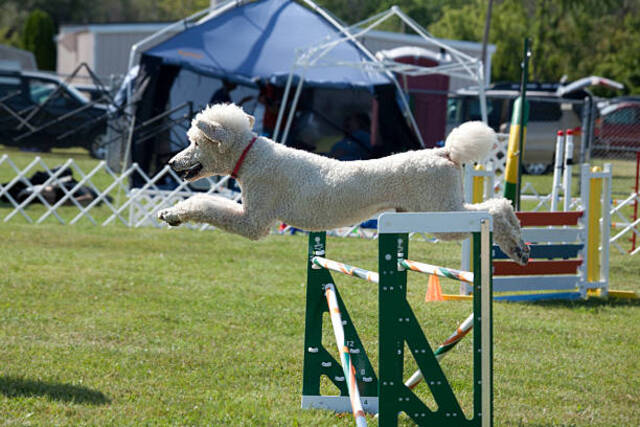
Behind performances such as standing, jumping through hoops, and even handstands, there are many hardships in training. For example, when training to stand, the trainer usually uses a rope to strangle the dog's neck to force it to maintain the posture. The handstand performance is achieved by tying the dog's hind legs and hanging it up and practicing repeatedly. Although this method allows dogs to master difficult skills, it goes against their natural nature and has also triggered reflection and attention on animal performances.
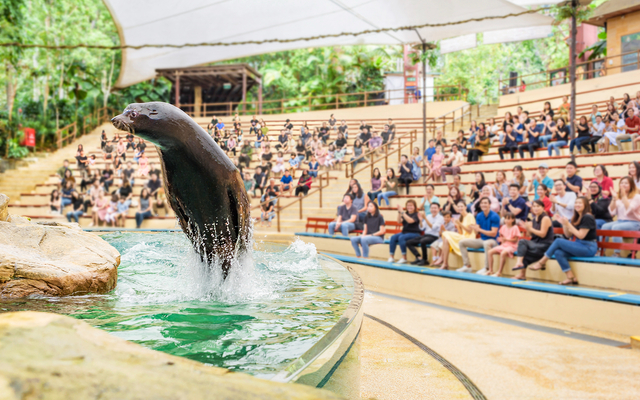
Paying attention to animals and refusing to support inhumane animal performances is our responsibility and respect for these silent partners. I hope that more people will pay attention to animal rights in the future so that animals can truly live a free life.
animal tags:
We created this article in conjunction with AI technology, then made sure it was fact-checked and edited by a Animals Top editor.